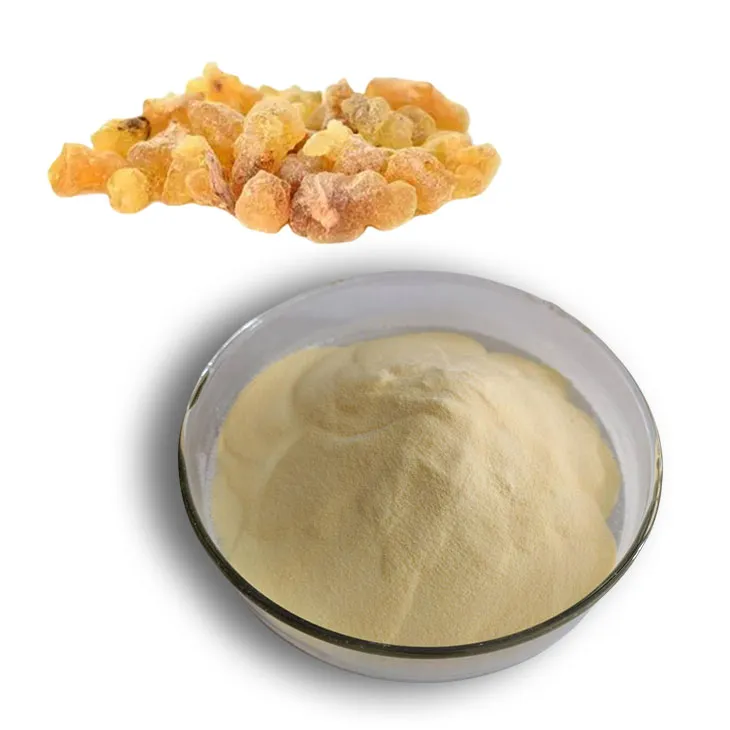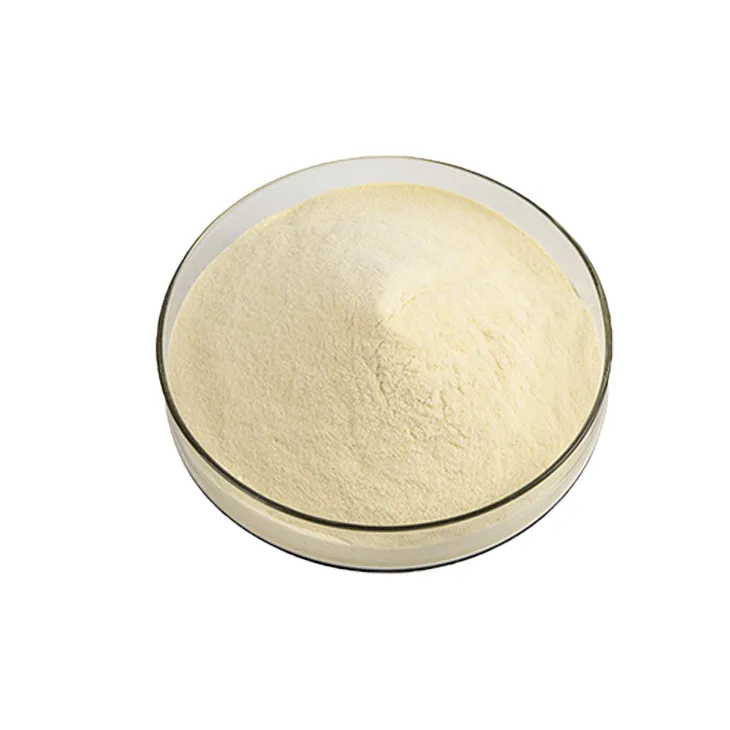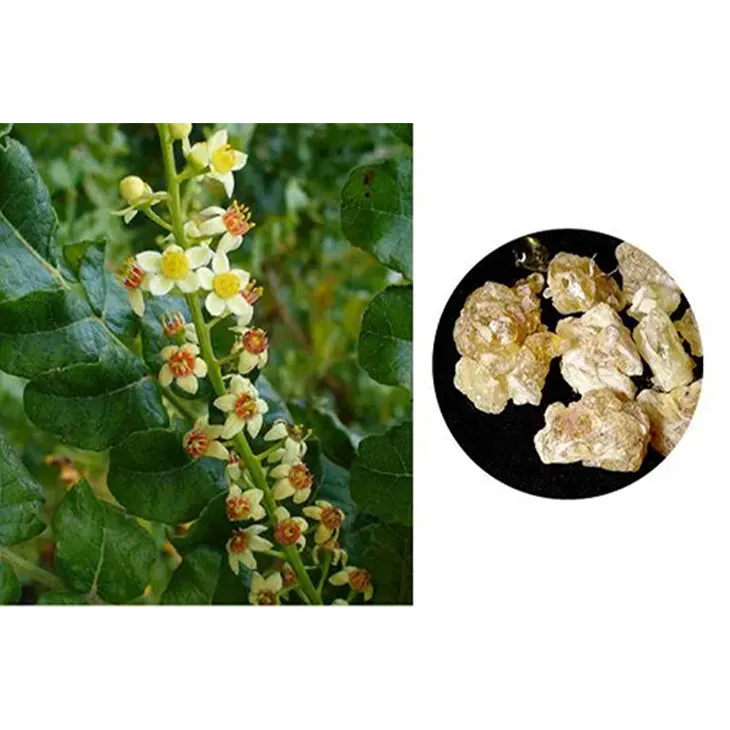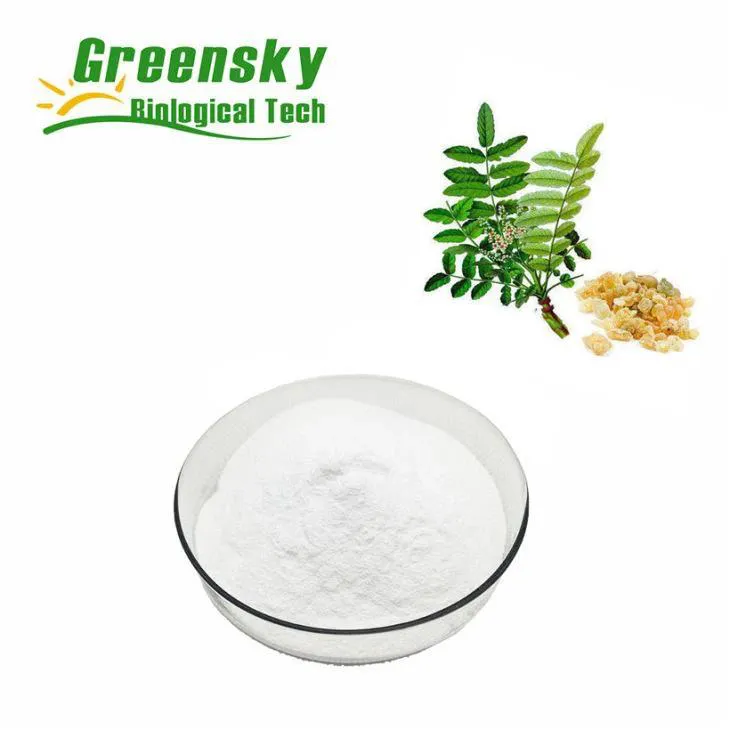- 0086-571-85302990
- sales@greenskybio.com
The flavor of mature Boswellia serrata and natural Boswellia serrata extract.
2024-11-13

1. Introduction
Boswellia serrata is a plant species that has been of great interest in various fields. The mature form of Boswellia serrata has a unique flavor, and its natural extract is also widely studied. This study aims to comprehensively analyze both the mature flavor of Boswellia serrata and its natural extract, including their organoleptic properties, biological activities, and the factors influencing their quality. Additionally, emerging research trends related to them and their importance in different industries will be explored.

2. Organoleptic Properties
2.1 The Flavor of Mature Boswellia serrata
The flavor of mature Boswellia serrata is complex and multi - faceted. It has a characteristic aromatic quality that is often described as earthy, woody, and slightly balsamic. The aroma is intense and can be detected even from a distance. When tasted, it may have a slightly bitter and pungent note, which is part of its unique profile. This flavor is a result of the various chemical compounds present in the plant, such as terpenes, which contribute to its distinctiveness.
2.2 Natural Boswellia Serrata Extract
The natural Boswellia Serrata Extract also has an interesting organoleptic profile. It retains some of the characteristic aroma of the whole plant, but in a more concentrated form. The extract may have a stronger resinous smell compared to the whole plant. In terms of taste, it can be more intensely bitter and may have a lingering aftertaste. The extraction process can affect these properties, as different solvents and extraction methods may concentrate or modify certain chemical components responsible for the flavor.

3. Biological Activities
3.1 Anti - inflammatory Properties
Both the mature Boswellia serrata and its natural extract have shown significant anti - inflammatory activity. The active compounds in Boswellia serrata, such as boswellic acids, are thought to play a key role in this regard. These compounds can inhibit the production of inflammatory mediators in the body, which is beneficial for various inflammatory conditions. For example, in arthritis, they may help reduce pain and swelling by modulating the immune response at the site of inflammation.
3.2 Antioxidant Activity
Another important biological activity is their antioxidant capacity. The chemical constituents of Boswellia serrata, including flavonoids and phenolic compounds, are able to scavenge free radicals in the body. Free radicals can cause oxidative stress, which is linked to various diseases such as cancer, heart disease, and neurodegenerative disorders. By neutralizing these free radicals, Boswellia serrata and its extract can potentially protect cells from damage and maintain the overall health of the body.

4. Factors Influencing Quality
4.1 Source and Geographic Origin
The quality of Boswellia serrata, both in terms of its flavor and biological activities, can be significantly influenced by its source and geographic origin. Different regions may have different soil compositions, climates, and altitudes, which can affect the growth and chemical composition of the plant. For example, plants grown in regions with more sunlight and well - drained soil may produce higher levels of certain active compounds. Additionally, the genetic variation among different populations of Boswellia serrata can also impact its quality.
4.2 Harvesting and Processing
Harvesting time and method are crucial factors. Harvesting Boswellia serrata at the appropriate maturity stage is essential for obtaining the desired flavor and bioactive compounds. Premature harvesting may result in lower levels of active ingredients, while over - harvesting can lead to a decline in plant quality over time. The processing of the plant into an extract also plays a role. The use of proper extraction techniques, such as solvent extraction or supercritical fluid extraction, can ensure the preservation of the active compounds and the integrity of the flavor.

5. Emerging Research Trends
5.1 Pharmaceutical Research
In the field of pharmaceuticals, there is an increasing focus on using Boswellia serrata and its extract for the development of new drugs. Researchers are exploring ways to optimize the extraction and purification processes to obtain more potent and pure compounds for medicinal use. For example, studies are being conducted to develop more effective anti - inflammatory drugs based on boswellic acids for the treatment of chronic inflammatory diseases.
5.2 Cosmetic Research
The cosmetic industry is also showing interest in Boswellia serrata. The antioxidant and anti - inflammatory properties of the plant make it a potential ingredient in skin - care products. Research is being carried out to investigate its effectiveness in reducing skin inflammation, improving skin elasticity, and protecting the skin from environmental damage. For instance, it may be incorporated into creams and lotions to provide anti - aging benefits.
6. Importance in Different Industries
6.1 Food and Beverage Industry
In the food and beverage industry, the unique flavor of Boswellia serrata can be used to add a distinct taste to products. It can be used in the formulation of certain specialty foods or beverages, such as herbal teas or flavored oils. However, regulatory approvals and safety considerations need to be taken into account when using it in food products.
6.2 Herbal Medicine Industry
The herbal medicine industry has long recognized the value of Boswellia serrata. It is used in traditional medicine systems for various ailments, and with the growing evidence of its biological activities, it is becoming more popular in modern herbal medicine. The natural extract can be formulated into capsules, tablets, or tinctures for easy consumption.
7. Conclusion
In conclusion, the mature Boswellia serrata and its natural extract have unique organoleptic properties, significant biological activities, and are influenced by various factors in terms of quality. Emerging research trends are highlighting their potential in different industries, from pharmaceuticals to cosmetics and food. However, further research is still needed to fully understand their mechanisms of action, optimize their use, and ensure their safety and quality in various applications.
FAQ:
What are the organoleptic properties of mature Boswellia serrata?
The organoleptic properties of mature Boswellia serrata may include its characteristic smell and taste. It often has a resinous, earthy, and slightly spicy aroma. The taste can be bitter and astringent. These properties are influenced by the chemical composition of the plant, which is rich in terpenes and other secondary metabolites.
What are the main biological activities of natural Boswellia Serrata Extract?
Natural Boswellia serrata extract has several notable biological activities. It has anti - inflammatory properties, which are thought to be due to its ability to inhibit certain enzymes involved in the inflammatory response. It may also have antioxidant activity, helping to neutralize free radicals in the body. Additionally, there is some evidence of its potential in promoting joint health and having anti - cancer properties, although more research is needed in these areas.
How do environmental factors influence the quality of mature Boswellia serrata?
Environmental factors play a significant role in the quality of mature Boswellia serrata. For example, the soil type and its nutrient content can affect the growth and chemical composition of the plant. Adequate sunlight and water availability are also crucial. If the plant is grown in poor soil or exposed to extreme environmental conditions such as drought or excessive heat, it may produce lower - quality resin with altered chemical profiles, which can in turn affect its flavor and biological activities.
What are the emerging research trends related to Boswellia serrata?
One emerging research trend is the exploration of Boswellia serrata in the field of modern medicine. Scientists are increasingly interested in understanding its mechanisms of action at the molecular level, especially in relation to its anti - inflammatory and anti - cancer effects. Another trend is the development of more efficient extraction methods to obtain higher - quality and more potent extracts. There is also research focused on the potential of Boswellia serrata in the treatment of neurodegenerative diseases, as well as its application in the cosmetic industry for its antioxidant and skin - health - promoting properties.
How is Boswellia serrata used in different industries?
In the pharmaceutical industry, Boswellia serrata is used for the development of drugs or dietary supplements due to its medicinal properties. In the cosmetic industry, it is used in skincare products for its antioxidant and anti - aging effects. In the food industry, although less common, it may be used as a flavoring agent in some traditional or specialty products because of its unique flavor. In the traditional medicine industry, it has been used for centuries to treat various ailments such as arthritis and digestive problems.
Related literature
- Boswellia serrata: A Review of Its Phytochemistry, Pharmacology, and Clinical Properties"
- "The Therapeutic Potential of Boswellia serrata Extract in Inflammatory Diseases"
- "Analysis of the Chemical Composition and Bioactivity of Boswellia serrata"
- ▶ Hesperidin
- ▶ citrus bioflavonoids
- ▶ plant extract
- ▶ lycopene
- ▶ Diosmin
- ▶ Grape seed extract
- ▶ Sea buckthorn Juice Powder
- ▶ Beetroot powder
- ▶ Hops Extract
- ▶ Artichoke Extract
- ▶ Reishi mushroom extract
- ▶ Astaxanthin
- ▶ Green Tea Extract
- ▶ Curcumin Extract
- ▶ Horse Chestnut Extract
- ▶ Other Problems
- ▶ Boswellia Serrata Extract
- ▶ Resveratrol Extract
- ▶ Marigold Extract
- ▶ Grape Leaf Extract
- ▶ blog3
- ▶ blog4
- ▶ blog5
-
Organic Tongkat Ali extract powder factory.
2024-11-13
-
How to make powder with ashwagandha extract.
2024-11-13
-
Rosehip extract manufacturers from China.
2024-11-13
-
The best cat's claw extract in nature.
2024-11-13
-
Chinese Dandelion Leaf Extract Suppliers.
2024-11-13
-
Artichoke Extract
2024-11-13
-
Longan Extract
2024-11-13
-
Lily extract
2024-11-13
-
Jujube Extract
2024-11-13
-
Black Rice Extract
2024-11-13
-
Phellodendron Extract
2024-11-13
-
Oyster Mushroom Extract Powder
2024-11-13
-
Milk Thistle Extract
2024-11-13
-
Yellow Pine Extract
2024-11-13
-
Medicinal Marshmallow Extract
2024-11-13





















